Whether you undertake bodyweight training, HIIT, or even yoga, muscle soreness is a common problem you experience every time you start a new workout routine or change it up in a big way. It can last for a day, and sometimes even a week, where you experience soreness and a burning sensation in your muscles that almost make you want to not work out for a while. Well, a way to get over this hurdle is to understand why muscles soreness occurs. In fact, here are some causes, preventive measures, home remedies, and treatment options you can consider.
Muscle soreness refers to the side effect of the stress exerted on your muscles while working out. In medical terms, it is known as Delayed Onset Muscle Soreness (DOMS). It usually starts within 6 to 8 hours after you start a new workout step or introduce a change in your workout activity. It may last up to 24 to 48 hours post the workout session. The reason behind the trapezius muscle pain or pain in some other body parts is inflammation within the muscle.
4 Causes of Muscle Soreness
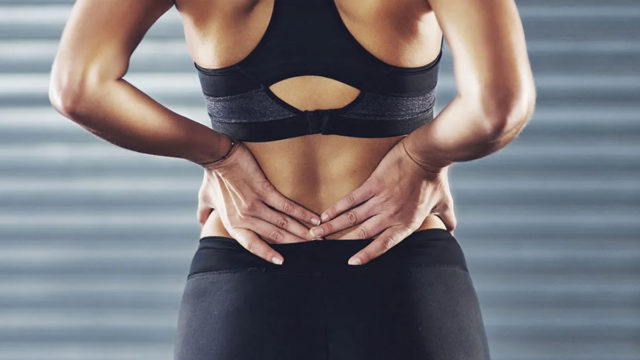
The most prominent causes of muscle pain after a workout are as below:
- Starting a workout session for the first time
- Raising the intensity of an exercise, that is, increasing the speed, increasing the number of weight lifted, increasing the resistance or incline, etc.
- Introducing a new exercise to your workout session
- Performing the same exercise repeatedly without sufficient breaks in the middle
7 Home Remedies For Muscle Soreness
Here are some natural remedies for muscle pain and inflammation that you can try for some relief.
1. Watermelon Juice

Watermelon is packed with the goodness of an amino acid known as L-citrulline that helps in speedy recovery post-workout. It is also known to treat muscle soreness within a day of an intense workout session.
2. Cherry Juice

Cherry juice is enriched with anti-inflammatory properties that aid in treating chest muscle pain, leg muscle pain, and pain in other body parts as well.
3. Move A Bit

Rest is very important when your muscles are sore. But that does not mean that you should stop moving completely. Non-movement may actually have the opposite effect and aggravate the shoulder pain or pain elsewhere. Instead of sitting all day long, just move around or perform some stretches to bring relief to sore muscles and ease the tension in the muscles sooner.
4. Massage
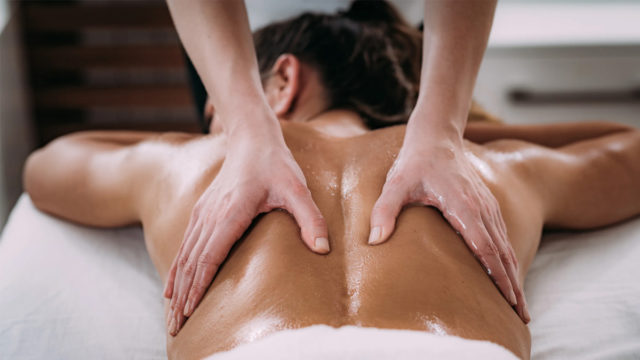
Massages are known to reduce the intensity of pain in the sore muscles after a workout and restore your normal walking gait by eliminating the limp. What’s more, it encourages circulation to the tissues, thus, reducing inflammation.
5. Sleep

There’s nothing like sleep when you have to recover from an illness. Whatever illness it may be. Sore legs after a workout or pain in some other body part occur as a result of muscle tears that have to heal over time. When you sleep, your body releases a higher amount of growth hormones that help in healing the muscles. Research shows that lack of sleep impedes muscle recovery.
6. Heat Therapy
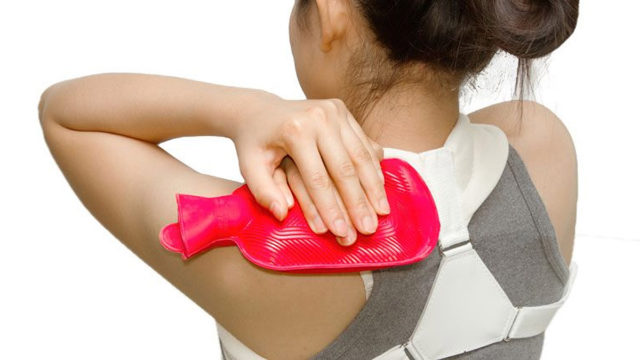
Applying heat to reduce lower back pain after a workout or elsewhere in the body can help reduce inflammation, relax the muscles, and encourage blood circulation. You can also jump into a warm shower. Or, you can start heat therapy immediately after a workout session and continue it for 8 hours. Do 8 hours sound impossible for you? Try moist heat wraps over dry heat wraps for 2 hours to get similar benefits.
7. Cold Compress
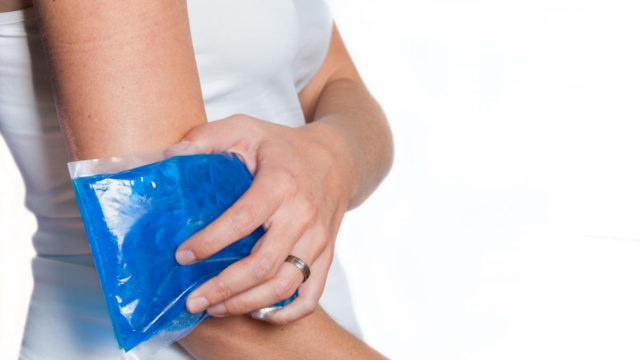
Cold applications, also known as cryotherapy, calm the nerves that have been inflicted with pain rather than cooling the muscles. To directly treat the leg muscle pain, chest muscle pain, shoulder muscle pain, or pain somewhere else in the body, place an ice pack directly on the affected area for about 10 minutes.
8 Before & After Workout Tips To Prevent Muscle Soreness
Below are some simple tips you need to keep in mind before and after your workout sessions to keep body pain after exercising at bay.
1. Pre & Post-Workout Session: Up Your Protein Intake

Maintaining a healthy protein intake will not prevent muscle pain and inflammation but it can speed up the recovery process, should the pain arise. Intake of 10g whey protein before and 10g protein after a workout session is believed to keep DOMS symptoms under control.
2. Pre & Post-Workout: Hydrate
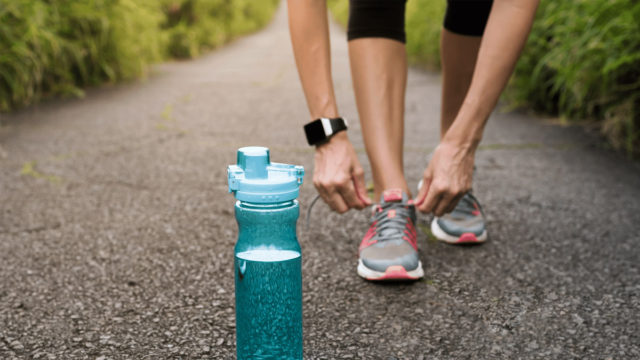
Drinking sufficient water flushes out the toxins that aggravate DOMS symptoms. It keeps your muscles hydrated. Dehydrated muscles are more prone to injury as they tighten up. It is recommended that you drink water at the rate of half of your body weight daily.
3. Pre-Workout Session: Keep Switching Between Workouts

When you switch up workouts after a long time, the trapezius muscle pain or pain in other body parts that haven’t been under pressure for long will increase by several folds. Instead, introduce minor changes to your workout session often to keep exercising each muscle of your body at regular intervals and reduce the chances of shoulder muscle pain or pain somewhere else. You can also do a mix of activities to stay fit like gym workouts, swimming, playing a sport, etc.
4. Post-Workout Session: Get Massages
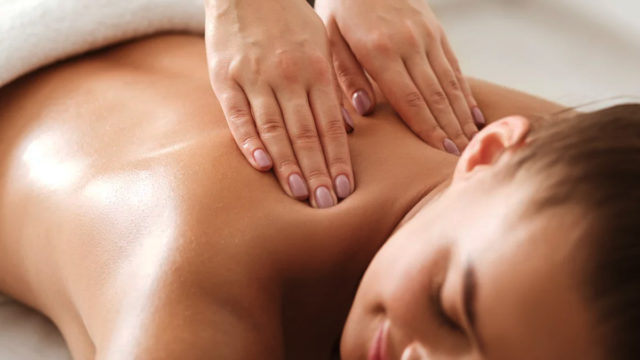
While working out, it is as important to work up muscles as it is to help them recover. And massages help you in doing just that! Opt for deep tissue massages as frequently as your health instructor recommends and you will be on your way to reduced chances of thigh muscle pain or pain in other muscles of the body.
5. Pre-Workout Session: Foam Roll
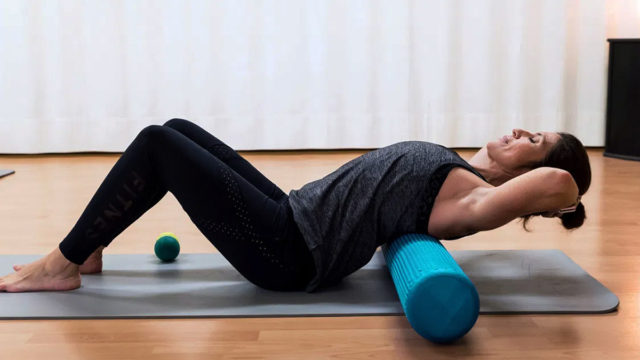
Do you have muscles that always feel inflexible? Take a foam roller and roll them out before you start your workout session. This improves blood circulation, mobilizes muscles, and keeps overuse injuries away. It also helps in building strength in the muscles that feel tight.
6. Pre-Workout Session: Wear Compression Garments
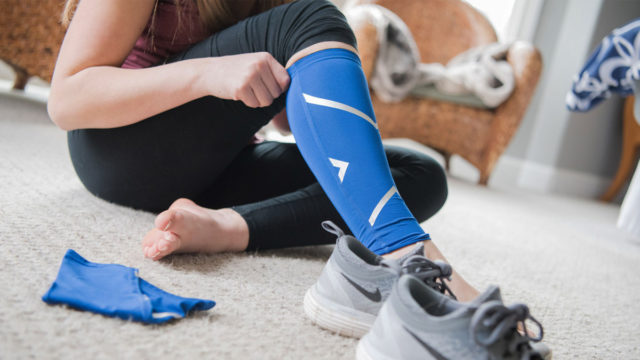
Wear compression garments to aid in the quick recovery of a sore muscle. These clothes are equipped with gel inserts that help in cooling down the affected muscles.
7. Post-Workout Session: Take A Day Off
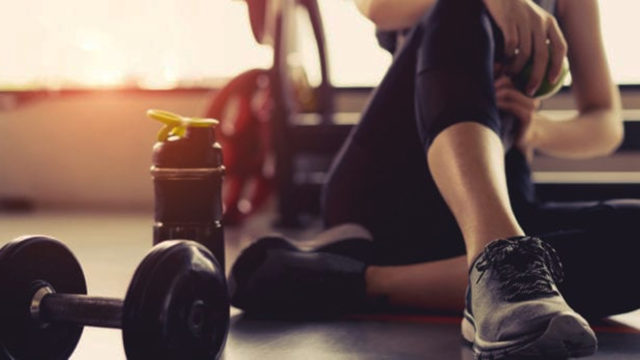
Exerting more pressure on the area of pain does not always help in controlling the discomfort. Instead, it may yield opposite results if the cause of pain is a muscle tear. If your pain is intense, make sure that you take a day off from your workout session.
8. Post-Workout Session: Pursue Some Light Activity
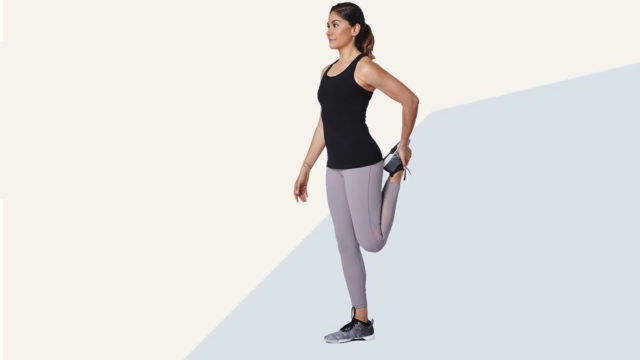
When you are in pain, it is most preferred that you take rest as much as possible. You can indulge in some light exercises to prevent aggravating muscle stiffness. Do some stretches, as we have talked about before, or go for a quick jog or swim to get going.
How To Know If Your Muscle Soreness Requires Doctor Consultation?

You will have to see a doctor in the following instances:
- If the pain is so intense that it is restricting your movement a lot
- If the pain stays for over 24 to 48 hours
Key Takeaways

- Muscle soreness or Delayed Onset Muscle Soreness (DOMS) is the side effect of the stress exerted on muscles while working out
- There are various instances that can cause muscle pain; you should be aware of them so that you can avoid them to keep away muscle soreness
- There are various pre- and post-workout session measures that you can undertake to control the chances of thigh muscle pain or pain in some other body muscle
- You should see a doctor if the pain is intense and/or the pain stays for more than 24 to 48 hours
Muscle soreness may be a common occurrence if you are following a rigorous workout session. However, you can reduce it to the bare minimum if you take certain precautions before and after your fitness sessions.

